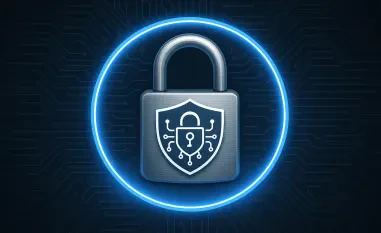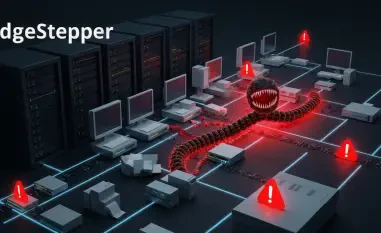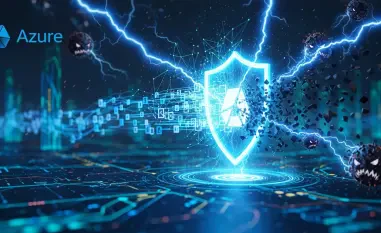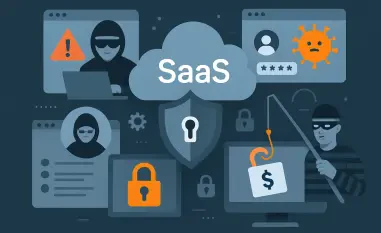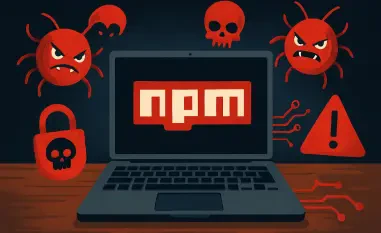Insider threats have become a significant concern for organizations worldwide, raising the stakes for comprehensive security strategies. Whether these risks arise from intentional misconduct or unintentional errors, the consequences can be devastating, necessitating robust insider risk management (IRM) solutions. Companies now recognize the importance of safeguarding their internal environments from these kinds of threats and are seeking advanced tools and technologies designed to counteract them. In this article, we explore the top 10 insider risk management solutions to watch in 2024 that promise to safeguard your business from within.
The Rising Threat of Insiders
According to the Ponemon Institute, insider threats are not only prevailing but escalating at an alarming rate, now accounting for 25% of all data loss incidents. This statistic underscores the critical need for effective IRM strategies, as it’s clear that threats don’t always come from outside an organization. Sometimes, the greatest risks are already within the network, a fact many companies overlook until it’s too late.
Furthermore, the financial burden associated with insider threats has significantly escalated. Over the past few years, there has been a 76% increase in the average cost of incidents, making it even more imperative for businesses to invest in effective IRM tools. Notably, 93% of organizations, according to prominent figures like Microsoft, express concern about insider risks, emphasizing the widespread acknowledgment of this growing issue within the business community. Therefore, understanding the importance of IRM tools and strategies is not merely a luxury but a necessity for modern organizations looking to safeguard their valuable data and maintain operational integrity.
Defining and Emphasizing IRM
Insider Risk Management (IRM) refers to the systematic practices and advanced technologies employed to identify and mitigate risks originating within an organization’s network. These sophisticated tools are designed to monitor user behavior meticulously, detect any anomalies that deviate from typical patterns, and respond promptly to potential threats. The strategic implementation of IRM solutions can be crucial in ensuring that any breaches are swiftly identified and effectively addressed, minimizing potential damage.
IRM solutions typically leverage advanced techniques, including machine learning (ML) algorithms, to detect out-of-the-ordinary patterns and behaviors among employees. This tech-driven approach allows organizations to stay one step ahead of potential infractions, recognizing subtle indicators of risk that might otherwise go unnoticed. By focusing on internal threats, IRM tools complement broader cybersecurity measures, delivering a more comprehensive safeguard for the enterprise. The emphasis on IRM isn’t just about preventing intentional misconduct; it’s equally about averting inadvertent risks arising from well-meaning employees who might make mistakes.
Essential Features of IRM Solutions
Effective IRM solutions come equipped with a wide array of functionalities designed to identify and respond to insider threats with timely precision. Key features include centralized control, real-time action capabilities, privacy considerations, and automation. Centralized control allows organizations to monitor activities across all departments and user accounts, providing a singular vantage point to oversee the intricate web of internal interactions.
Real-time action features are pivotal, ensuring that any threats identified are dealt with immediately, significantly reducing the window for potential damage. Automation, another cornerstone of effective IRM solutions, plays a significant role in minimizing human error and accelerating response times, which is crucial for mitigating the impacts of insider threats. Instead of relying solely on manual oversight, automated systems can continuously monitor user activities, detect anomalies instantaneously, and initiate appropriate responses without delay. Privacy considerations are also integrated into these solutions, ensuring that user data is handled with the utmost care, aligning with regulatory standards and organizational policies.
Implementing Best Practices in IRM
For organizations to successfully implement IRM strategies, it’s crucial to comply with regional and geographical regulations, ensuring that all practices align with legal standards. Establishing clear governance policies within the enterprise, coupled with defining appropriate usage of applications, are critical steps in creating a robust risk management framework. Regular training sessions for employees are equally important, helping them recognize and avoid potential threats, thereby reducing the likelihood of accidental breaches.
In addition to training, focused monitoring of high-risk sectors within the organization ensures that these vulnerable areas receive the necessary attention to prevent insider threats. By implementing these best practices, companies establish a proactive stance against internal risks. Training not only educates employees about the risks but also empowers them to act as the first line of defense. Organizations that routinely update their policies and training modules align themselves better with evolving threats and regulatory landscapes, ensuring they remain resilient and compliant over time.
AI and ML: Transformative Technologies in IRM
Artificial Intelligence (AI) and Machine Learning (ML) are pivotal in advancing IRM solutions, offering transformative capabilities for detecting and managing insider threats. These technologies analyze massive amounts of data to identify patterns and anomalies that could indicate security risks. The depth and scale at which AI and ML operate allow them to recognize sophisticated and subtle behaviors that might elude traditional monitoring tools.
Integration of AI and ML enhances the effectiveness and efficiency of IRM tools. These technologies provide deeper insights into user activities and substantially improve the timeliness and accuracy of threat detection. For instance, AI-driven analytics can continuously learn and adapt to new threat patterns, enhancing an organization’s ability to preemptively address emerging risks. The ability to dynamically adjust to new threats makes AI and ML indispensable components of modern insider risk strategies, driving continuous improvement and adaptation in IRM practices.
Cloud-Based IRM Solutions
The shift to cloud-based solutions is a significant development in the realm of IRM, offering enhanced scalability, flexibility, and security features vital for contemporary business operations. Cloud platforms cater to organizations handling large volumes of data, providing the necessary infrastructure to support comprehensive IRM deployments. These solutions enable seamless integration with existing systems, facilitating the adoption of new technologies without disrupting ongoing operations.
Cloud-based IRM solutions are equipped with continuous monitoring and automatic update capabilities, ensuring that the organization remains protected against evolving threats. The dynamic nature of cloud computing provides an adaptable environment where security measures can be scaled up or down based on the current threat landscape. Moreover, cloud solutions often include advanced data analytics and reporting features, offering businesses actionable insights into user behavior and potential risks. By marrying the agility of cloud platforms with robust IRM functionalities, organizations can enhance their security postures and respond more effectively to internal threats.
Automation and Integration in IRM Solutions
Modern IRM solutions place a high emphasis on automating response mechanisms and ensuring seamless integration with existing security frameworks. Automation significantly reduces the time taken to detect and react to threats, which is crucial for minimizing potential damage. This automated approach ensures that responses are immediate and consistent, thereby enhancing the overall effectiveness of the risk management strategy.
Integration ensures that these IRM solutions can work harmoniously with other security tools in the organization, creating a unified system that offers a comprehensive security posture. This cohesion enables enterprises to leverage existing investments in security technologies while enhancing their capabilities with advanced IRM features. By ensuring that all security tools operate in a synchronized manner, businesses can achieve a more robust and streamlined approach to mitigating insider threats. This unified approach is essential for maintaining a high level of security across all facets of the organization, from network endpoints to cloud infrastructures.
Standardization and Centralized Control
A growing trend in IRM is the creation of standardized processes across cloud, network, and endpoint security, alongside centralized control for more efficient monitoring and quicker threat responses. Standardization simplifies compliance with various regulations and policies while ensuring that security measures are consistent and effective across the board. This uniformity in security protocols establishes a solid defense mechanism against insider threats, providing a reliable security posture that is easier to manage and maintain.
Centralized control allows for more efficient oversight of all security activities within the organization. By centralizing monitoring efforts, security teams can quickly identify and respond to potential threats, reducing the likelihood of significant security breaches. This approach not only enhances the ability to detect and respond to threats in real-time but also streamlines incident investigation processes. Standardization and centralized control collectively ensure that security operations are conducted efficiently and effectively, bolstering the organization’s resilience to insider risks.
Featured IRM Solutions
DoControl
DoControl provides a comprehensive, automated, AI-driven detection solution specifically tailored for SaaS applications. The platform offers real-time data access monitoring, ensuring that any unusual activities are immediately flagged for review. Granular data control capabilities allow organizations to specify who can access which data and under what conditions, thereby reducing the risk of unauthorized data breaches.
DoControl’s no-code policy enforcement feature simplifies the administration of security policies, enabling businesses to implement and modify protocols without requiring extensive coding knowledge. This makes it easier for organizations to adapt to changing security requirements promptly. Automated workflows further enhance operational efficiency, minimizing the need for manual intervention and speeding up response times to potential threats. Overall, DoControl stands out as a robust solution for managing insider risks in cloud environments, combining advanced AI capabilities with user-friendly features.
ActivTrak
ActivTrak specializes in monitoring employee activity, offering robust tracking for both remote and in-office work environments. The platform identifies inactive accounts and flags potentially risky applications, providing regular snapshots of employee activities to ensure continuous monitoring. This ensures that security teams have a comprehensive view of what users are doing at any given time.
The system also allows for the setting of custom limits for new applications and automatically blocks unauthorized activities, reducing the risk associated with the use of unapproved software. Furthermore, by regularly capturing screenshots of employee activities, ActivTrak gives organizations detailed insights into user behavior, helping to identify potential issues before they escalate. This combination of real-time monitoring and preventive measures makes ActivTrak a valuable tool for safeguarding against insider threats.
Elevate Platform
The Elevate Platform employs a sophisticated three-pronged approach to insider risk management: Engage, Control, and Identity. This enables comprehensive coverage of user activities and potential security concerns. The platform offers user risk-based authentication, continuously assessing the risk profiles of users and adjusting access privileges accordingly.
By integrating automated risk data into existing security operations, Elevate enhances the organization’s ability to identify and respond to threats swiftly. The platform also tracks user behavior meticulously, providing detailed insights into activities that might indicate security risks. This proactive approach ensures that potential threats are identified early and dealt with effectively, minimizing the likelihood of significant breaches.
Splunk
Splunk is renowned for its capabilities in data access and advanced analytics. The platform integrates seamlessly with existing security infrastructures, automating security workflows to reduce the mean time to resolve (MTTR). By providing real-time data querying and visual reporting, Splunk enables security teams to quickly identify and address potential threats.
The platform’s advanced analytics capabilities allow for deep insights into user activities, making it easier to detect unusual behaviors indicative of insider threats. Splunk’s ability to automatically correlate vast amounts of data from various sources helps streamline incident investigation processes, ensuring that security teams can respond to threats promptly and effectively. This combination of advanced analytics and seamless integration makes Splunk a powerful tool for comprehensive insider risk management.
Conclusion
Insider threats are increasingly plaguing organizations worldwide, underscoring the need for comprehensive security strategies. These threats can stem from deliberate misconduct or inadvertent mistakes, and their impacts can be devastating. As a result, there’s a pressing need for robust insider risk management (IRM) solutions. Companies are now more aware than ever of the necessity to protect their internal environments from such dangers. They are actively seeking advanced tools and technologies specifically designed to mitigate these risks.
To address these growing concerns, businesses are turning to an array of innovative IRM solutions. These tools not only help in detecting potential insider threats but also in implementing preventive measures and corrective actions. As the landscape of cybersecurity evolves, staying ahead of these threats is crucial. Companies must adopt sophisticated strategies to balance security with operational efficiency.
In the ever-changing realm of cybersecurity, keeping updated with the latest IRM solutions is vital for the protection of an organization’s assets and reputation. In this article, we delve into the top 10 insider risk management solutions to watch in 2024. These cutting-edge technologies promise to significantly bolster your business’s defenses from within, ensuring that insider threats are effectively countered and managed.




